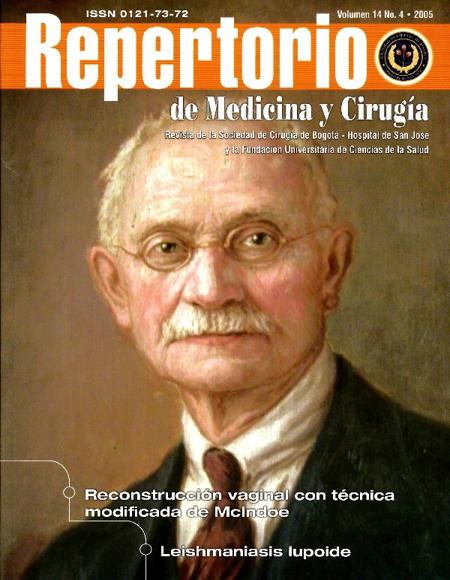Anestecia intratecal para cesárea: Bajas dosis de levobupivacaina pesada más fentanil
Intrathecal anesthesia for cesarean section: Low doses of heavy levobupivacaine plus fentanyl
Esta obra está bajo una licencia internacional Creative Commons Atribución-NoComercial-CompartirIgual 4.0.
Mostrar biografía de los autores
La anestesia regional es una de las técnicas preferidas para la cirugía de cesárea por dar acceso a una mejor condición quirúrgica, por la baja tasa de mortalidad materna y fetal, lo que anima al cuerpo medico, paramédico e inclusive a las pacientes a su práctica cotidiana. El objetivo de esta revisión del tema es describir cómo dosis bajas de fentanil más levobupivacaina ofrecen un bloqueo sensitivo y motor adecuado sin compromiso hemodinámico de la paciente, obteniendo así una rápida recuperación y adecuada analgesia postoperatoria, disminuyendo el uso de medicamentos vasopresores, inotrópicos, analgésicos y antieméticos. Conscientes de que aún no existe la técnica ideal para el parto por cesárea y conociendo el auge y el gran número de anestesiólogos que prefieren la anestesia subaracnoidea, se deja a disposición esta revisión que en el futuro puede servir como base referencia) para un trabajo de corte analítico.
Visitas del artículo 723 | Visitas PDF 639
Descargas
1. Hodgsons P, Spencers L. Innovaciones en anestesia raquídea Anesthesiol clin North América, Regional Anestesia. 2000 Feb;18(2):237-50
2. Hawkins JL, Koonin LM, Palmer SK, et al. Related deaths during obstetric delivery in the United States, 1979-1190. Anesth analg 1997;86(2):277-84.
3. Dyer R. Joubert I. Low-dose spinal anaesthesia for Caesarean section. Curr Opin Anaesthesiol. 2004;17(2):301-8.
4. Mazoit JX, Boico O. Myocardial uptake of bupivacaine Pharmacokinetics and Pharmacodynamics of bupivacaine enantiomers in the isolated perfused rabit heart. Anesth Analg. 1993;77(2): 477-82.
5. Denson DD, Behbehani MM, et al. Enantiomer-specific effects of an intravenously administered arrhythmogenic dose of bupivacaine on neurons of the nucleus tractus solitarius and the cardiovascular system in the anesthetised rat. Anesthesiol Clin North América. 1992;17(3): 311-16.
6. Valenzuela C, Snyders DJ, et al. Stereoselective Block of Cardiac Sodium Channels by Bupivacaine in Guinea Pig Ventricular Myocytes. Circulation. 1995;92(2):3014-24.
7. Goveia CS, Magalhaes E. Estudo duplo- cego comparativo do bloqueio sensitivo em peridural lombar com bupivacaina, formas racémica (RS) et al(S). Rev Bras Anestesiol. 1997;47(supp 22) S159-60.
8. Faccenda KA. The pharmacokinetics of Levobupivacaine and Racemic Bupivacaine Following Extradural Administration. Reg Anesth Pain Med. 1998 May—Jun;23(3):160-70.
9. Faccenda KA, Henderson DJ. Pharmacokinetics of Levobupivacaine and Racemic Bupivacaine Following Extradural Administration for Selective Cesarean Section. Proceeding of the 12th World Congress of Anaesthesiologists, Poster Presentation; Montreal; 2.000.
10. Reynolds F. An Intradermal Study of the Local Anesthetics and Vascular Effects of the Isomers of Bupivacaine. Br J Clin Pharmacol. 1998;86(6):63-8.
11. Gennery B, McLeod G. Systemic Toxicity and Efficacy of Levobupivacaine- Clinical Pharmacokinetics data. Proceeding of the 12th World Congress of Anesthesiologists. Poster Presentation; Montreal; 2000.
12. Harding DP, Collier PA, Huckle RM. Cardiotoxic Effects of Levobupivacaine, Bupivacaine and Ropivacaine: An In vitro Study in Guinea Pig and Human Cardiac Muscle. 1998;12(Suppl 125).
13. Huang YF, Pryor ME, Mather LE: Cardiovascular and Central Nervous System Effects of Intravenous Levobupivacaine and Bupivacaine in Sheep. Anesth Analg. 1998;86(2):797-804.













